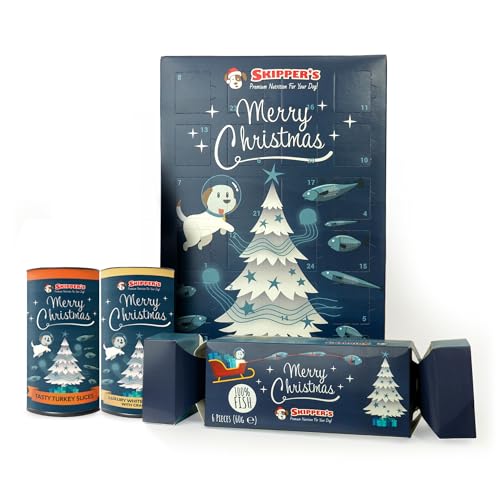








When it comes to adding a sprinkle of flavour to your furry friend’s meals, turmeric is a top choice. This bright yellow spice not only enhances the taste but also boasts anti-inflammatory properties. A pinch mixed into their food can do wonders for their joints and overall health.
Another popular option is cinnamon. Just a dash can elevate the taste of their kibble, while also providing a natural way to support their blood sugar levels. I often mix a little into my pup’s homemade treats, and she absolutely loves it!
Ginger, too, can be a delightful addition. It aids in digestion and can soothe an upset stomach. My experience with giving my dog ginger during car rides has helped her stay calm and comfortable. Just ensure the amount is small, as too much can lead to tummy troubles.
Don’t forget about parsley! This herb not only freshens breath but also offers a healthy dose of vitamins. I often chop some fresh parsley and sprinkle it on top of my dog’s meals, and she seems to enjoy the added flavour while reaping the benefits.
Flavours That Can Delight Your Canine Companion
Turmeric is a fantastic addition to your pet’s meals. It offers anti-inflammatory properties and can help with joint health. Just a pinch mixed into their food can enhance flavour and provide health benefits. Remember, moderation is key; too much can upset their stomach.
Cinnamon is another great option. It not only adds a sweet aroma but can also aid in regulating blood sugar levels. A sprinkle in homemade treats or their regular meals can make them irresistible. Ensure that you choose Ceylon cinnamon, as it’s safer than the common Cassia variety.
Herbs to Consider
Parsley is a wonderful herb that freshens breath and is packed with nutrients. Adding finely chopped parsley to your furry friend’s food can improve digestion and overall health. Basil has similar benefits and can be a tasty addition to their diet. Just a few leaves can go a long way in making their meals more enjoyable.
For those looking to provide variety, consider checking out the best rotational dog food options. Rotating flavours and ingredients keeps mealtime exciting and can help prevent picky eating habits.
Understanding Dog-Friendly Seasonings
Rosemary is a fantastic choice for enhancing meals. Its aromatic nature not only pleases the palate but may also provide health benefits such as improved digestion. I often sprinkle a pinch of dried rosemary on my dog’s food, and he seems to love it. Just ensure you use it in moderation to avoid any potential gastrointestinal issues.
Another great option is turmeric. This golden spice is known for its anti-inflammatory properties. Mixing a small amount into your furry friend’s meals can help support joint health, especially in older animals. I’ve noticed a significant improvement in my dog’s mobility after incorporating turmeric into his diet. Always check with your vet before introducing new ingredients.
Safe Choices and Precautions
While some seasonings are beneficial, others can be harmful. Garlic and onion should be strictly avoided as they can be toxic. Always research or consult a vet before trying something new. I’ve had to learn this the hard way, as my curiosity once led me to experiment with flavours that weren’t safe for my pup.
Cinnamon can also be a delightful addition, known for its antioxidant properties. Just a dash can make a meal more enticing, and it’s safe in small amounts. I love adding a sprinkle when I’m making homemade treats. Remember, moderation is key with all flavour enhancers.
Benefits of Adding Flavours to Canine Cuisine
Incorporating various flavours into your pet’s meals can significantly enhance their overall health and well-being. Here are some noteworthy advantages:
- Enhanced Digestion: Certain flavourings, like ginger and cinnamon, can support digestive health, reducing bloating and discomfort.
- Antioxidant Properties: Ingredients such as turmeric provide powerful antioxidants that help combat free radicals, promoting a healthier immune system.
- Anti-Inflammatory Effects: Adding natural flavour elements can reduce inflammation, which is especially beneficial for older animals or those with joint issues.
- Improved Palatability: Unique flavours can make meals more appealing, particularly for picky eaters, encouraging them to consume a balanced diet.
- Weight Management: Certain flavourings can stimulate metabolism and help maintain a healthy weight, contributing to your pet’s longevity.
My own experience with my furry friend illustrates these points well. When I began adding a pinch of turmeric to his meals, I noticed a significant improvement in his energy levels and overall enthusiasm for food. It’s remarkable how a small change can lead to such positive outcomes.
Experimenting with different flavour combinations can also keep your pet engaged during mealtime. Just make sure to introduce new ingredients gradually and monitor for any adverse reactions.
Remember, always consult your vet before making any significant changes to your pet’s diet, especially when it involves introducing new flavourings.
Top Seasonings That Are Safe for Canines
Rosemary is a fantastic option for enhancing meals. It not only adds flavour but also has antioxidant properties that can benefit your furry friend’s health.
Ginger can provide relief from digestive issues. A small pinch mixed into their food can help soothe an upset stomach and add a zesty taste they may appreciate.
Cinnamon
This aromatic addition can be sprinkled in moderation. It supports healthy blood sugar levels and offers a delightful aroma that many pets find appealing.
Turmeric
A little of this golden spice can work wonders. Known for its anti-inflammatory properties, turmeric can contribute to joint health. Just remember to pair it with a small amount of black pepper to enhance absorption.
Parsley is another excellent choice. It freshens breath and is safe in moderate amounts. It’s a great way to add a green touch to their meals.
When incorporating any new flavouring, always start with small amounts. Monitor your pet’s reaction to ensure they enjoy the new addition without any adverse effects.
How to Introduce Flavours to Your Canine’s Diet
Start small. Choose one new flavour and sprinkle a tiny amount over your pet’s regular meal. Observe their reaction for a day or two. If they seem to enjoy it, gradually increase the amount. I remember the first time I added a dash of turmeric to Max’s food. He sniffed, hesitated, then devoured his bowl. It was a joy to see his enthusiasm!
Mixing Techniques
Blend the flavour into wet food for easier acceptance. If your companion is a little fussy, adding a small amount of broth can help mask the new taste. I often mix cinnamon with pumpkin puree for a treat, and it’s a hit every time. Always ensure the combination is safe and suitable for their diet.
Monitoring Reactions
Keep an eye out for any signs of discomfort or allergic reactions after introducing a new flavour. Symptoms can include excessive scratching, unusual behaviour, or digestive upset. If anything seems off, revert to their original diet and consult a vet. I learned this lesson the hard way when I introduced a new herb too quickly–Max had a bit of an upset tummy. Patience is key; proceed slowly and enjoy the process of discovering new tastes together!
Spices to Avoid for Dog Health
On my journey with my furry friend, I quickly learned that not all flavour enhancers are safe. Some ingredients can cause serious health issues. Here are a few that should be kept far away from your pet’s meals:
1. Onion and Garlic
- Both can damage red blood cells, leading to anaemia.
- Even small amounts can accumulate over time, posing risks.
2. Nutmeg
- This can cause hallucinations, increased heart rate, and disorientation.
- It’s best to keep nutmeg out of reach entirely.
3. Salt
- Excessive intake can lead to thirst, urination, and even sodium ion poisoning.
- Watch for signs like vomiting or lethargy.
4. Paprika
- Can irritate the digestive system and cause discomfort.
- Keep it off your pet’s plate to avoid any adverse reactions.
5. Allspice
- This may lead to digestive issues and nervous system problems.
- Better to stick with known safe options.
Always consult with a vet before introducing anything new. Even common flavourings can have unexpected effects on our four-legged companions. Keeping my buddy safe has always been my top priority, and avoiding these ingredients has been a key part of that.
Homemade Dog Treats with Spices
Creating treats at home can be a delightful experience, both for you and your furry companion. One of my go-to recipes includes pumpkin and cinnamon, which not only smells amazing but also offers health benefits. Pumpkin is excellent for digestion, while cinnamon can help regulate blood sugar levels.
Recipe: Pumpkin Cinnamon Treats
Here’s a simple recipe to whip up a batch of these tasty goodies:
- 1 cup pure pumpkin puree
- 2 ½ cups whole wheat flour
- 1 egg
- 1 teaspoon cinnamon
- 1/4 cup water (as needed)
Mix all ingredients in a bowl until you form a dough. Roll it out to about 1/4 inch thick and cut into your desired shapes. Bake at 180°C for about 25-30 minutes until golden brown. Let them cool before serving.
Other Combinations to Try
Experimenting with different flavours can keep things interesting. Here are a few other combinations that I’ve found my pet enjoys:
| Ingredient | Health Benefit |
|---|---|
| Peanut Butter & Turmeric | Anti-inflammatory properties |
| Sweet Potato & Ginger | Supports digestive health |
| Carrots & Dill | Good for vision and freshens breath |
When crafting these delightful snacks, keep an eye on portion sizes. Even healthy add-ins can be too much in large amounts. It’s all about balance, right? Plus, the joy on my pup’s face when he receives a homemade treat makes the effort worthwhile!
Consulting Your Vet About Seasonings for Canines
Before adding any flavourings to your pet’s meals, it’s wise to have a chat with your veterinarian. They can provide tailored advice based on your furry friend’s health, age, and dietary needs. A vet’s insight can help you avoid potential allergens or harmful substances that might be found in certain seasonings.
Health Considerations
Health issues like allergies or digestive sensitivities can influence what’s safe for your four-legged companion. For instance, if your pup has a history of gastrointestinal problems, it’s crucial to discuss any new additions to their diet, including flavour enhancements. A quick consultation can save you from complications down the line.
Individual Reactions
Each canine has a unique palate and digestive system. Some may tolerate a pinch of certain flavourings, while others may react negatively. Monitoring your pet after introducing new elements is essential. If you notice any unusual behaviour or discomfort, consult your vet immediately. Keeping a diary of what you introduce can be helpful for both you and your vet.







